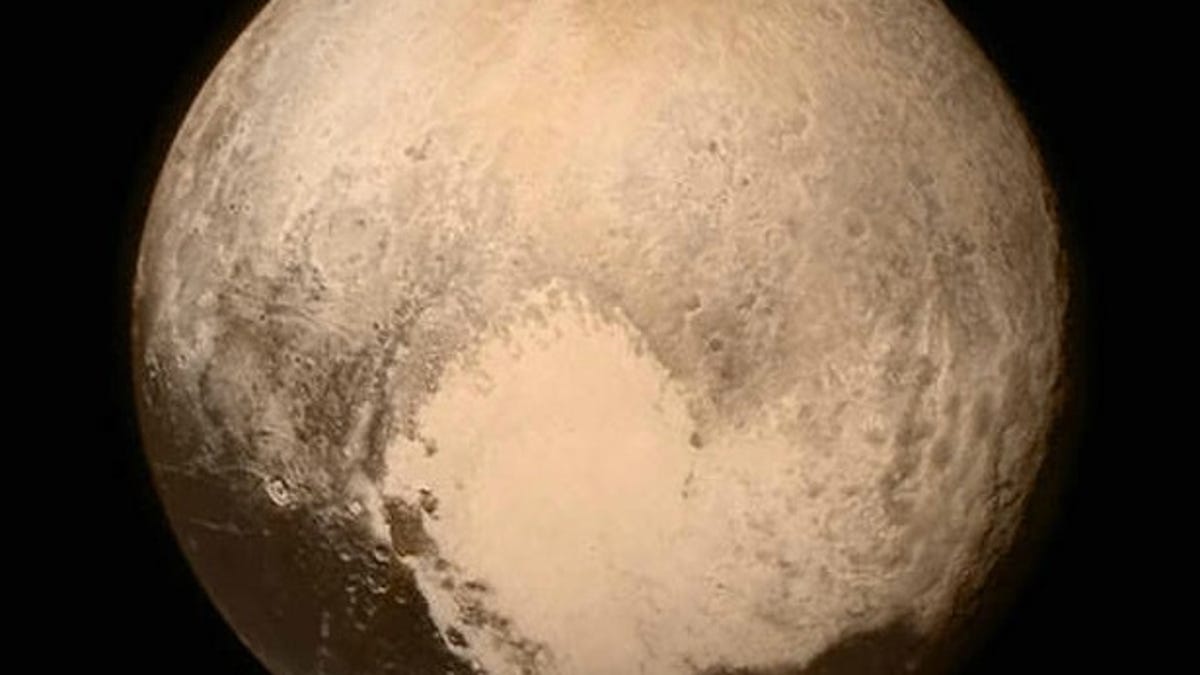Mysterious 'heart' on Pluto has finally been explained
It's beautiful, but as cold as your ex-boyfriend. And in the future, it may even start to "beat."
Pluto has an icy heart, but now science knows how it got there.
The large, bright, somewhat-heart-shaped patch of mostly nitrogen ice was spotted on the dwarf planet in July 2015, when NASA's New Horizons spacecraft snapped a now-famous image.
The 1,200-mile-across "heart" was named Tombaugh Regio, after Clyde Tombaugh, the American astronomer who discovered Pluto in 1930. NASA noted last summer that "the heart borders darker equatorial terrains, and the mottled terrain to its east (right) are complex. However, even at this resolution, much of the heart's interior appears remarkably featureless--possibly a sign of ongoing geologic processes."
A study just published in science journal Nature delves deeper into those processes. Researchers ran simulations tracking 50,000 years, into both the past and the future, to see what formed the icy symbol and how it might change.
"We discovered that the heart shape is to a large degree created by highly volatile nitrogen ice that unavoidably accumulates in the basin and forms a permanent reservoir of ice, as observed by New Horizons," study author Tanguy Bertrand told Researchgate. While there are indeed deep ice basins on the surface, the research disproved another theory, which held that a reservoir of nitrogen ice existed somewhere deep below the dwarf planet's surface.
But there's something even weirder, for we earthlings who like the idea that the shape is a heart. Bertrand told Gizmodo that the massive glacier making up much of the heart will change shape with time, enlarging and shrinking like ... you guessed it, a heart beating.


